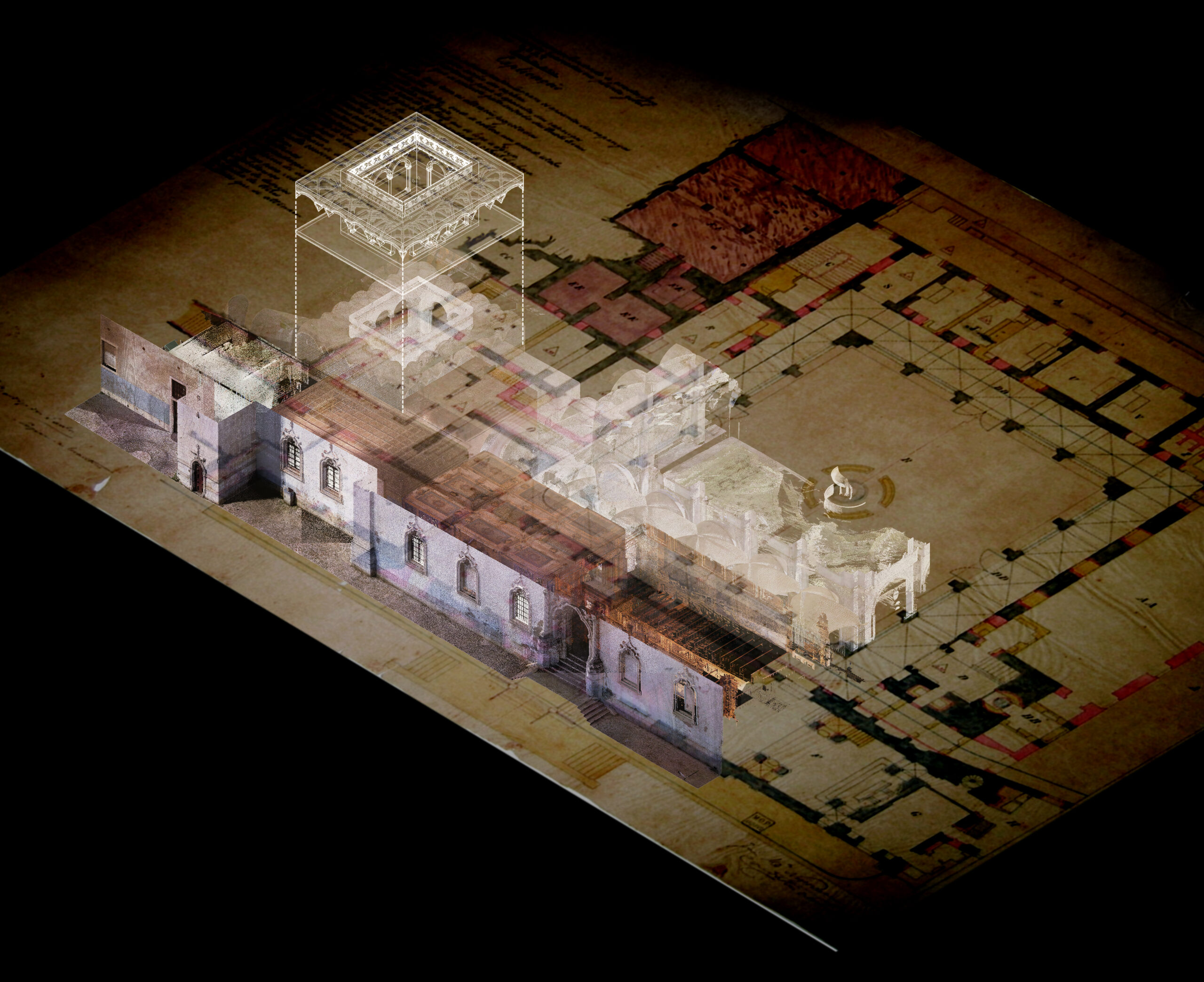
Iconographic Interpretations of the Statutes of the Province of Santa Maria da Arrábida
We began investigating the 17th century Estatutos da Província de Santa Maria da Arrábida in May 2019 to better understand the history of Nossa Senhora da Piedade da Caparica and its relationship to other Arrábida Convents across Portugal.
Dictating practices of daily life, the rules ultimately provided directives to the maintenance of a life of strict observance to the teachings of St. Francis which upheld poverty, silent contemplation, communitarian life and pastoral care as their highest virtues. The text is organized into chapters which describe in detail many aspects of life including political hierarchies within the community, the procedures of masses, practices of the chorus, rituals of fasting and the strict rules of the capuchin wardrobe among others.
Beyond these social aspects, the text also dictates architectural aspects of the convents in its 40th chapter “Dos Edificios” (About the Buildings) which provides specific planar dimensions and furnishings for a series of conventional spaces: the church, chorus, sacristy, the chapter, kitchen, refectory, pantry, dormitories, library and hostel.
Together with the help of historians Dr. João Luís Inglês Fontes from the Faculdade de Ciências Sociais e Humanas (FCSH) and Luís Nascimento, the current director of the convent at Caparica, we foresee that this exercise of translation will help us in two different ways: firstly to help better understand the spatial organization of the convent at Caparica in its original state and secondly to help us understand how other convents integrated these rules into their own buildings.
Given that the text essentially provided the systemic ideal for which all of the convents of the Arrábida province were to follow, we see an interesting opportunity to explore how closely the rules were enforced or altered across different convents and if not, what justified their divergence?
English translations, volumetric digital models and a visual guide to the 17th century Estatutos da Província de Santa Maria da Arrábida were produced for all of the conventional spaces described in the 40th chapter “Dos Edificios” (About the Buildings).
The original measurement system of the text (palms and fingers) were converted into current metric conventions through a conversion chart by Oliveira Marques (1963). While some spaces in the text are given strict dimensions and adjacencies, others are vaguely described and without specific locations. To differentiate between the dimensionless and the dimensioned volumes, the models were represented in different colours. Spaces or furniture elements not defined by specific dimensions are represented with red. For example, we know from the text that the chorus is meant to be situated in a porch-like construction outside of the main volume of the church but its size is unspecified. Spaces described with dimensions are represented with white and are modelled according to the actual dimensions in the text. While we found that the descriptions of most spaces included dimensions, the relationship between the spaces are hardly articulated. An ongoing question in our research is whether there are any patterns to the spatial adjacencies of the existing convents.
Together, the measurements and volumetric digital models were also recorded into a physical document that served as the basis to insert field notes as the visits across the other Arrábida convents were made. This was our way to concretize findings, make comparisons and record future research questions to other experts. For instance, the absence of a description for the cloister is on an ongoing mystery given that it appears to be the central organizational feature of many convents.
Source: Oliveira Marques A H de 1963 Pesos e Medidas Dicionário de História de Portugal (vol V) ed. J Serrão (Porto: Livraria Figueirinhas) pp 67-72.
Acknowledgements to:
The Social Sciences and Humanities Research Council of Canada (SSHRC)
New Paradigm / New Tools
Instituto Superior Técnico – University of Lisbon
Carleton Immersive Media Studio
The Municipality of Almada
NOVA University of Lisbon – School of Social Sciences and Humanities (NOVA FCSH)












